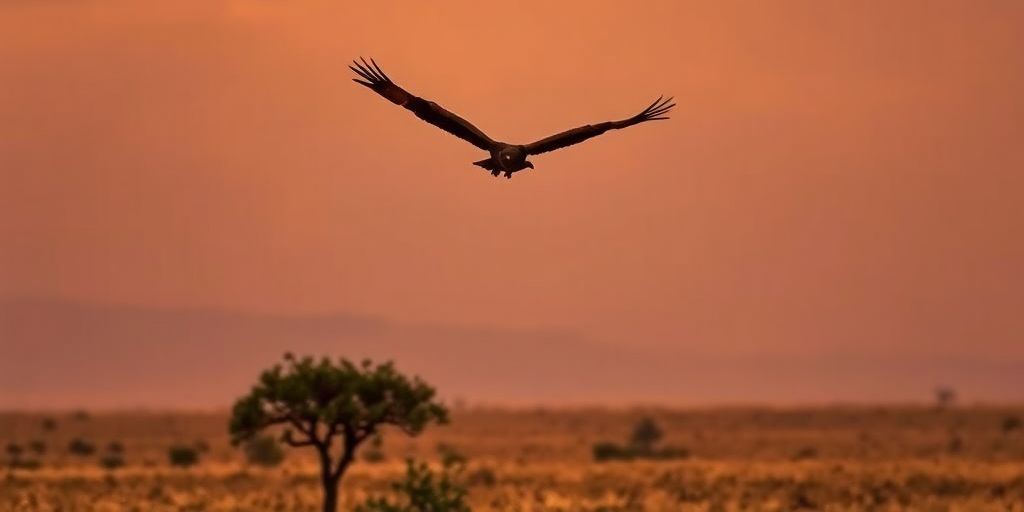Are scavenger birds nature’s unsung health guardians? These avian cleaners perform vital functions by controlling pathogenic threats and recycling organic matter into essential nutrients. Their capacity for processing decaying material sustains ecological balance through efficient wildlife carcass consumption. This article explains how species like vultures, with their exceptional digestive adaptations, support ecosystem cleanup and public health. Readers will gain insight into the critical contributions of scavenger birds, highlighting their indispensable roles in nutrient recycling and disease regulation.
Nutrient Recycling and Disease Prevention: How Scavenger Birds Maintain Ecosystem Health
Scavenger birds dismantle decaying matter by converting complex organic compounds into simpler substances that nourish vegetation and soil microorganisms. Their activity, exemplified by vultures that efficiently process rotten flesh, initiates a critical carrion decomposition process. This transformation releases nutrients back into the ecosystem, accelerating plant growth and fortifying soil health. In natural settings, birds and insects like carrion beetles collaborate in breaking down carrion, thereby stimulating nutrient circulation and contributing to a balanced food web. Their actions provide indispensable disease prevention services by rapidly eliminating sources of harmful pathogens.
Scientific studies indicate that systematic carcass removal by these birds disrupts conditions that favor bacterial and parasitic outbreaks. The efficient digestive adaptations of vultures and similar species ensure that decaying matter does not linger in the environment, reducing the potential for pathogens to proliferate. Evidence from field research shows that areas with active scavenger bird populations exhibit improved public health sanitation through decreased incidences of carcass-borne infections. Researchers have observed that these ecological functions support not only the nutrient recycling process but also contribute to broader ecosystem stability.
- Carcass removal
- Pathogen control
- Nutrient release
- Soil enrichment
- Habitat sanitation
Data from controlled experiments and long-term field observations support these roles, demonstrating that scavenger birds are integral to maintaining ecosystem health. Research reveals that areas with robust avian scavenging activity benefit from enhanced nutrient cycling and lower disease risks, underscoring the ecological impact of carrion decomposition. Measurements of nutrient changes in soil, alongside pathogen monitoring in wildlife populations, provide concrete examples of the ecosystem benefits derived from these natural processes.
Conservation Challenges and Future Direction for Scavenger Birds’ Ecological Roles
Conservation initiatives are pivotal to maintaining ecosystem health and ensuring the continued functionality of scavenger bird populations. Declines in these species compromise carcass elimination and increase risks of disease outbreaks, posing challenges to both wildlife and public health. Current efforts, such as LIFE Aegypius Return, LIFE GypRescue, and LIFE Safe for Vultures, combine captive breeding, habitat protection, and reintroduction programs to address these issues in species including the bearded, cinereous, Egyptian, griffon, and Rüppell’s vultures.
- Illegal poisoning
- Habitat loss
- Reintroduction projects
- Collaborative conservation strategies
- Urban wildlife management practices
Future directions will likely integrate detailed research with adaptive policy-making. Ongoing studies are expected to identify innovative methods for mitigating risks linked to illegal poisoning and habitat degradation, while planning for urban expansion requires fresh management practices geared toward supporting scavenger activity. Enhanced monitoring techniques and advanced analytics will support the development of targeted conservation initiatives. Policy frameworks may evolve to incorporate cross-border collaboration and sustainable funding initiatives, sustaining existing programs and promoting new efforts. As a result, bridging science with pragmatic conservation strategies will form the cornerstone of initiatives aimed at preserving these critical ecological agents for the long term.
Final Words
in the action, the article presented a detailed exploration of scavenger birds’ contributions—from natural waste disposal and nutrient recycling to species-specific behaviors and conservation challenges.
The discussion underscored the importance of these avian scavengers’ roles, emphasizing scientific insights and actionable conservation efforts.
The Ecological Role of Scavenger Birds remains integral to maintaining ecosystem balance and enhanced public health, promising a future where scientific research and community engagement drive positive change.
FAQ
Q: What is the primary role of scavengers in ecosystems?
A: Scavengers perform essential waste management by consuming dead organisms, recycling nutrients, and preventing disease spread through efficient carcass removal in natural environments.
Q: How do vultures benefit the environment?
A: Vultures possess highly acidic stomachs that neutralize harmful bacteria in decomposing matter. They eliminate disease-causing pathogens and accelerate nutrient recycling in ecosystems.
Q: What makes birds effective scavengers?
A: Birds, particularly vultures, have exceptional eyesight for locating carrion, specialized digestive systems for processing decomposing matter, and efficient flying abilities to cover large territories.
Q: How do scavenger birds prevent disease outbreaks?
A: Scavenger birds rapidly consume and process animal carcasses, limiting the time available for disease-causing bacteria to multiply and spread through the environment.
Q: What threatens scavenger bird populations?
A: Scavenger bird populations face threats from habitat destruction, illegal poisoning, reduced food availability, and human interference with their natural feeding grounds.
Q: What types of birds are classified as scavengers?
A: Common scavenger birds include vultures, condors, ravens, crows, and some species of eagles. The Marabou stork and secretary birds also exhibit scavenging behavior.


